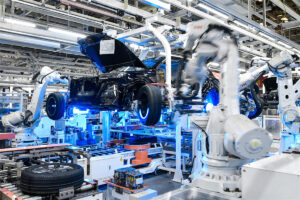
Over the past 25 years, China has experienced a meteoric rise as an industrial and economic powerhouse, inadvertently pulling Australia along for the ride. At the dawn of the new millennium, China held the position of the sixth-largest economy globally, nestled between Italy and France, with an economy a mere quarter the size of Japan’s. Today, China stands as the world’s second-largest economy, boasting a size more than four times that of third-place Germany.
During this period, the inflation-adjusted value of Australia’s resource exports has soared, with China emerging as the primary destination for the nation’s natural resources. In the 2023-24 financial year, the Department of Foreign Affairs and Trade reported that China’s importation of Australian exports surpassed that of the next five nations—Japan, South Korea, the U.S., India, and Singapore—combined.
Australia’s Resource Dependency on China
Australia’s economy has long been buoyed by its resource exports, particularly iron ore and coking coal, which are fundamental to China’s steelmaking industry. Currently, China is the world’s largest steel producer, outproducing the rest of the world combined. However, this massive industrial capacity necessitates a consistent demand for steel.
Historically, the Chinese real estate sector has been a significant driver of steel consumption, supporting unprecedented homebuilding initiatives. Yet, the ongoing bust in the real estate market has seen steel consumption decline annually. Since the construction downturn became entrenched in 2022, infrastructure construction and manufacturing investment have emerged as new drivers of steel demand within China.
Challenges in Fixed Asset Investment
Recent data on fixed asset investment revealed a contraction in infrastructure investment year-on-year for the first time since late 2021. Simultaneously, investment in the manufacturing sector has plummeted, reaching its lowest level since the lockdown-impacted year of 2020. This downturn poses significant challenges for the Chinese steel sector, which increasingly relies on exports to maintain production levels.
Amidst the deterioration in fixed asset investment, the Chinese steel sector is increasingly reliant on exports to find purchasers for the still elevated levels of production.
Implications for Australian Exports
The potential decline in Chinese demand for resources like iron ore could spell trouble for Australia. China imports more iron ore than the rest of the world combined, and a decrease in demand could leave Australia with limited alternatives. Meanwhile, production at the joint Chinese and Rio Tinto-owned Simandou mega-mine in West Africa is set to commence later this year, potentially impacting iron ore prices further.
Despite these challenges, there is a silver lining. Australia remains one of the lowest-cost and highest-quality producers globally, allowing its mines to remain profitable even in adverse scenarios. However, a severe downturn could significantly reduce the revenue from these exports, affecting both state and federal treasuries.
If that scenario were to be realised, the strategy of using larger government and higher levels of taxpayer-funded employment to support the economy would be swiftly brought into question.
Looking Ahead
The evolving economic landscape in China presents both challenges and opportunities for Australia. As China grapples with its internal economic shifts, Australia must navigate its dependency on resource exports and explore diversification strategies to mitigate potential risks. The coming years will test the resilience of Australia’s economic strategies and its ability to adapt to global market changes.
As the world watches China’s next moves, Australia’s economic future remains closely tied to the shifting tides of its largest trading partner. The decisions made today will shape the economic landscape for years to come, underscoring the need for strategic foresight and adaptability.







